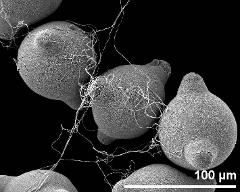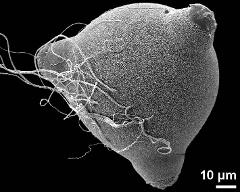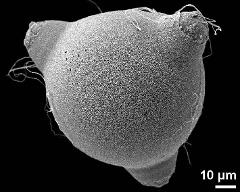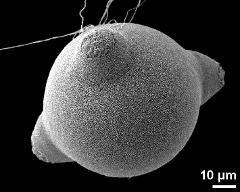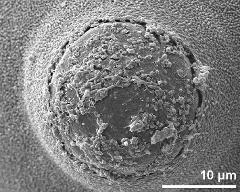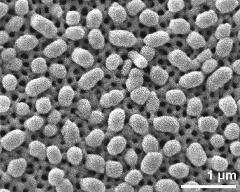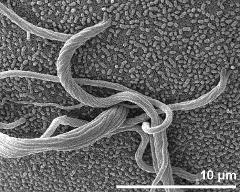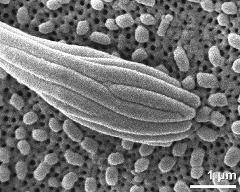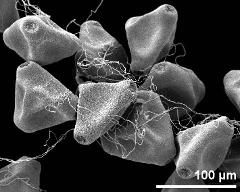Epilobium fleischeri
Taxonomy: Angiospermae, Myrtales, Onagraceae, Epilobium
Published: 2016-12-27
Pollen Description
Shape, Size and Aperture
pollen unit: monad, dispersal unit and peculiarities: monad, size (pollen unit): large (51-100 µm), size of hydrated pollen (LM): -, shortest polar axis in equatorial view (LM): -, longest polar axis in equatorial view (LM): -, shortest diameter in equatorial or polar view (LM): -, longest diameter in equatorial or polar view (LM): -, pollen class: porate, polarity: heteropolar, P/E-ratio: oblate, shape: -, outline in polar view: triangular, dominant orientation (LM): -, P/E-ratio (dry pollen): oblate, shape (dry pollen): -, outline in polar view (dry pollen): triangular, infoldings (dry pollen): interapertural area sunken, aperture number: 3, aperture type: porus, aperture condition: porate, triporate, aperture peculiarities: aperture membrane ornamented, annulus
Ornamentation and Structure
LM ornamentation LM: -, nexine: -, sexine: -, SEM ornamentation SEM: microgemmate, perforate, suprasculpture SEM: -, TEM tectum: -, infratectum: -, foot layer: -, endexine: -, intine: -, wall peculiarities: viscin threads, supratectal element: -
Miscellaneous
pollen coatings: -, reserves in cytoplasm: -, cell number: -, Ubisch bodies: -
Annotations: viscin threads rising from proximal polar area only
Author(s) of diagnosis: Halbritter, Heidemarie
Pictures
Picture legend
- hydrated pollen grains - fresh, rehydration (water) & critical point dried & sputter coated with gold, photographer: Halbritter, H.
- polar view (proximal) - fresh, rehydration (water) & critical point dried & sputter coated with gold, photographer: Halbritter, H.
- polar view (distal) - fresh, rehydration (water) & critical point dried & sputter coated with gold, photographer: Halbritter, H.
- equatorial view - fresh, rehydration (water) & critical point dried & sputter coated with gold, photographer: Halbritter, H.
- aperture - fresh, rehydration (water) & critical point dried & sputter coated with gold, photographer: Halbritter, H.
- exine surface - fresh, rehydration (water) & critical point dried & sputter coated with gold, photographer: Halbritter, H.
- polar proximal area with viscin threads - fresh, rehydration (water) & critical point dried & sputter coated with gold, photographer: Halbritter, H.
- origin of viscin thread - fresh, rehydration (water) & critical point dried & sputter coated with gold, photographer: Halbritter, H.
- dry pollen grains - dry, sputter coated with gold, photographer: Halbritter, H.
Literature
- (1998) Preparing living pollen material for scanning electron microscopy using 2,2-dimethoxypropane (DMP) and criticalpoint drying. Biotechnic Histochem 73: 137–143
Copyright and Citation
Cite this publication as:
Halbritter H. 2016. Epilobium fleischeri. In: PalDat - A palynological database. https://www.paldat.org/pub/Epilobium_fleischeri/302861;jsessionid=E1A61D2F9EF9D77B65958F60EE6A3A61; accessed 2024-11-01

